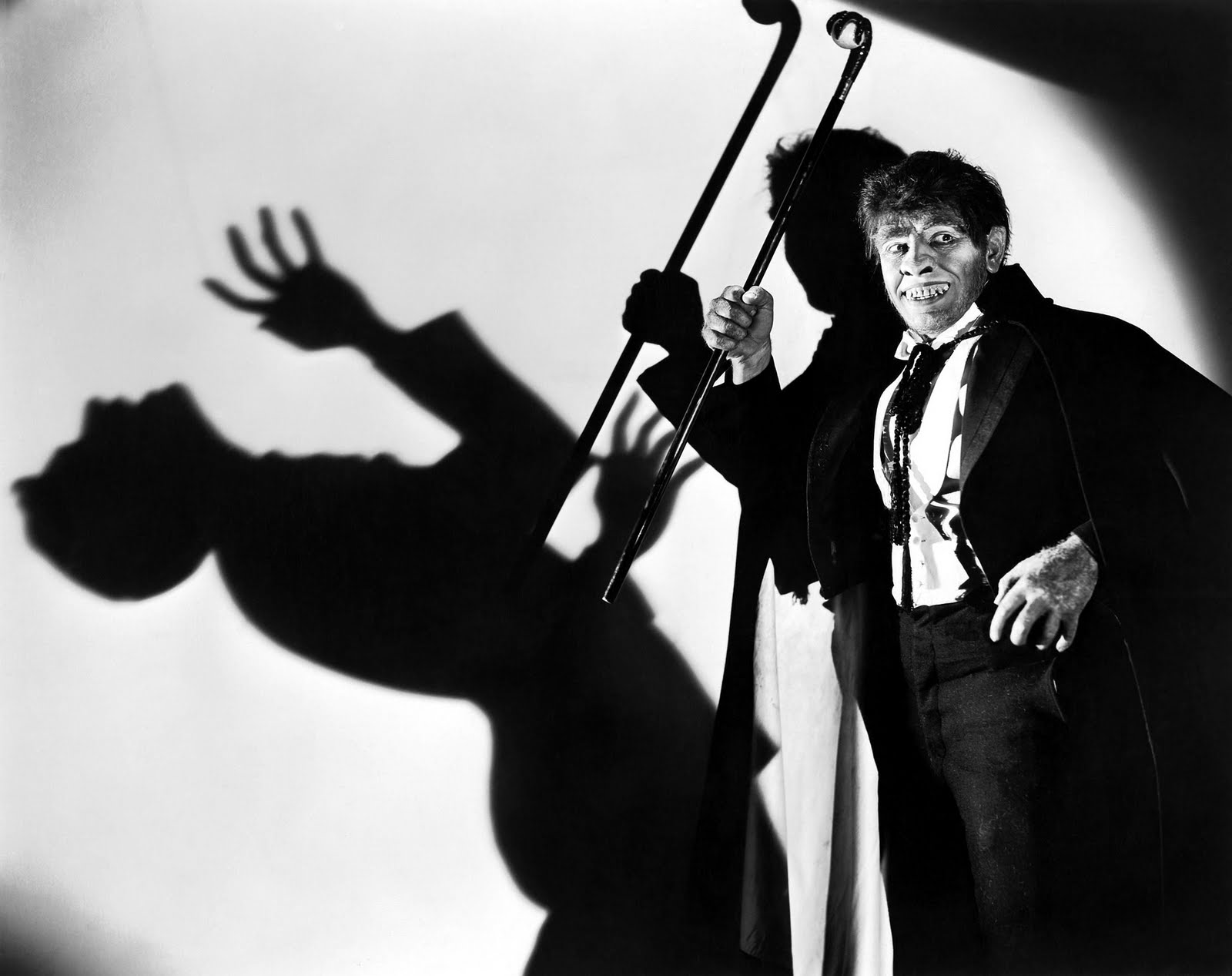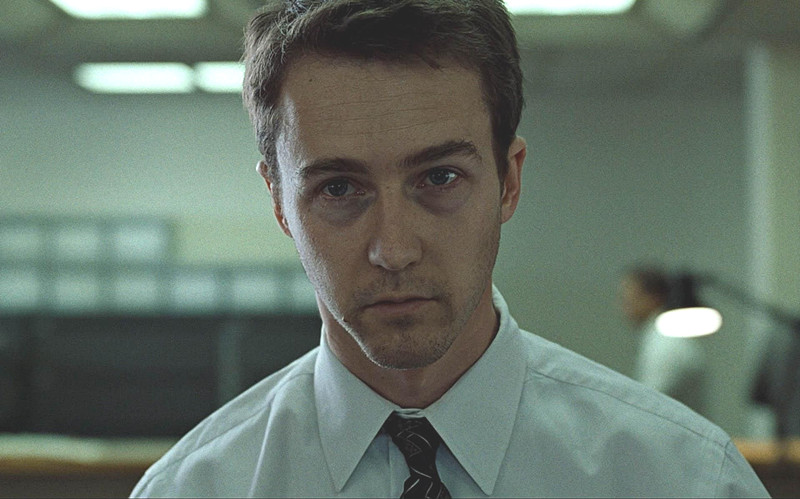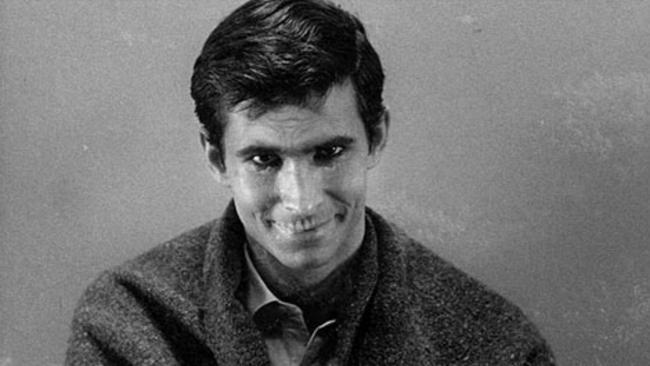Dissociative Identity Disorder (DID) or Multiple Personality Disorder (MPD) is a mental state characterized by two or more identities or personalities that control a person’s behavior, accompanied by memory impairment.
We won’t get into great details when it comes to psychological definitions, nor symptoms, We’ll try to focus exclusively on movies and the way this state has been used to create fascinating plot twists and movie characters. It has been used ever since the first adaptations of “The Strange Case of Dr Jekyll and Mr Hyde“, but especially in the last few decades.
Not many movies manage to handle this plot device in a believable manner, but here is a short list of those which succeeded to do a considerably good job. Obviously, the title itself is a major spoiler, we will try not to give away much more, but still, proceed at your own risk.
15. Charlie Bailey Gates – Me, Myself And Irene (2000, Jim Carrey)
When the bizarre Farrelly brothers are at the helm, you know what you are in for – a comedy with a solid script, full of rude, black humor and awkwardly inappropriate situations. Hence, this was a perfect vehicle for Jim Carrey, allowing him to do what he does best, and create his funniest character alongside Fletcher Reede and Lloyd Christmas.
He plays a too-nice-to-be-true state trooper, whose kindness has been abused and taken advantage of countless times throughout his life. Years of suppressed rage finally take their toll, and he suffers a nervous breakdown, triggered by his wife’s infidelity, thus creating Hank, a violent and rude alter-ego who will stop at nothing to get what he wants and enjoys retaliating against people who harmed Charlie.
When he is given a seemingly easy task of escorting a woman who allegedly committed a hit-and-run, things are not what they appear to be. They soon find themselves on the run from corrupt police officers and thugs led by the woman’s mobster ex-boyfriend, and Hank’s constant resurfacing at the most inconvenient times doesn’t help either.
This fast-paced comedy allowed Carrey to exploit his talent to the fullest, and he does so by demonstrating glorious transformations from the good-natured Charlie to the deliciously wicked Hank. He seems to be having a riot, completely letting himself loose’, and he truly owns the film. Recommended if you are a Jim Carrey fan and you can get past the low-brow and sometimes vulgar humor.
14. Mort Rainey – Secret Window (2004, Johnny Depp)
After Jack Nicholson’s creepy turn in “The Shining“, Johnny Depp delivers another good performance as a writer in deep trouble, based on Stephen King’s literary source. Not nearly as good as the former, this movie still has a strong central character, Mort Rainey, once-famed writer, who finds himself in a pickle when a strange man accuses him of “stealing his story“, and becomes increasingly violent over time.
Not a stranger to the roles of unbalanced and mentally unstable characters, Depp is in his own backyard, playing a man who begins to doubt his sanity while connecting the dots between himself and the mysterious visitor, but also the novel in question which bears a scary resemblance and his own life. The answers he ultimately finds are extremely unpleasant, but it is a delight to watch Depp accepting his own distorted and horrific reality, and thus forcing the viewers to take another look into the soul of the writer in question, who they came to care for over the course of the movie.
Sadly, while Depp is outstanding, the film itself fails to deliver the “shocking twist“ it was aiming for, leaving us with the familiar “been-there-seen-that“ feeling. However, even though the ending is predictable, the fans of Johnny Depp will be satisfied to see him tackling a very meaty role successfully. His typically quirky manner is completely appropriate for this movie.
13. Robert Elliott – Dressed To Kill (1980, Michael Caine)
In this erotically charged thriller, Michael Caine stars as a psychiatrist who has troubles rejecting his frustrated patient’s advances, but also has to stop his unstable transgender patient Bobbi from doing anything inappropriate. Here Caine plays the role completely atypical for him, proving once more how versatile he is as an actor.
He takes on a very complex role in an emotional sense, and plays it with great ease, although he is a bit underused sometimes. He does what he can to bring the necessary suspense and tension, but this is not always easy with the given material, since this is a direct homage to “Psycho“, although to call it inferior to the aforementioned masterpiece would be an understatement. Someone would even call it a direct rip-off of “Psycho“. Hence, even though there are occasionally satisfying segments, the ending comes across as cliched and predictable.
However, Caine is among more convincing characters in the movie, and he steals almost every scene he is in, making the viewers wish he had more screen time. Although the movie is just a tiny bit more than being a piece of cheap fun, he delivers a solid performance as a conflicted doctor with some highly complex issues about his sexuality. Especially in the scenes where his feminine side prevails.
12. Carter Nix – Raising Cain (1992, John Lithgow)
An eminent child psychologist conceals some terrible secrets which emerge when he finds out about his wife’s infidelity. Daddy issues have rarely left such a scary mark on an individual, and now he projects them onto his own daughter, wreaking havoc when many different personalities appear. Twelve years after the previously mentioned movie, Brian de Palma strikes again, with another psychological thriller, which, while having a very incoherent script, is fast-paced, sometimes funny and occasionally really scary.
It manages to deliver a greater amount of suspense and emotional restlessness (there is much less nudity, though), and the credit for that mostly goes to the truly captivating main character, John Lithgow. He carries the movie by managing to give his tormented character (who is obviously meant to be a villain) a human dimension, so the viewers grow to care for him despite his obvious mental issues.
Every character he plays is different in speaking, movements, manners and gestures, ranging from a little baby to an adult person. A truly brilliant turn that brings back memories of his fantastic roles in “The Twilight Zone“ and “Ricochet“. Given that the material he had to work with is not exactly first-class, he really made the most out of it. You should definitely give it a shot if you are a fan of Lithgow’s and De Palma’s, you’ll be in for another mesmerizing acting creation.
11. Earl Brooks – Mr. Brooks (2007, Kevin Costner)
Kevin Costner may seem a strange choice to play an emotionally complex character like this, but he pulls it off quite well. Although the plot is a bit generic (a respected gentleman tries to cover up the fact that he is also a serial killer), it is handled pretty successfully, as we watch the constantly conflicted anti-hero trying to suppress the violent urges that overwhelm him from time to time, and hide them from his unsuspecting family at the same time.
When he thinks he finally can control his harrowing needs, his alter-ego emerges again, pushing him to continue killing (he is known as the Thumbprint Killer). This movie employs a rarely used technique – two personalities are clearly different from the start (and played by different actors). William Hurt does a fantastic job as Marshall, the killing personality of Mr. Brooks, who has no problem to be a murderer, but is disgusted to see the pair of victims making love with open curtains.
He is a beautifully wicked combination of brutality and humor, the latter always being needed when we are to have compassion for such a character (since he is the most important in the movie, it is obviously necessary). With a persistent detective on their trail, the two characters have to lay low and be resourceful, as it becomes more and more difficult to be a distinguished gentleman and a serial killer simultaneously. Without a doubt, this is one of the better Kevin Costner’s roles in the last couple of decades.
10. Henry Jekyll – Dr Jekyll And Mr Hyde (1931, Fredric March)
Every list about DID or MPD needs to have an entry about Jekyll and Hyde, because this novella was the first one to mention this disorder. In order to see how intriguing and interesting it was for the filmmakers, there have been 123 adaptations of it so far. While not a single one of them is completely true to its literary source, the one with Fredric March, who earned an Oscar, is one of the most famous ones.
March is brilliant playing a doctor who believes there is a good and evil side in everyone, and making a potion to separate them. Expectedly, he lets his wild side loose, committing horrific crimes. Since this was a ground-breaking movie where you can feel the innovation almost literally dripping from the screen, it required a strong actor to play both parts convincingly. He balances beautifully between the respected doctor in love and his freakish, murderous alter-ego who starts to prevail over time.
While he had to trade flowery, romantic dialogue with Rose Hobart as Jekyll (and it becomes boring after a while), there are no restraints for him as Hyde, and he can play this simian-like character with relish. He is an absolute joy to watch as a menacing, monstrous beast who turns the life of a cockney hooker into a nightmare. His transformation, both physical, due to fantastic make-up and effects, and artistic, is the pivotal part of this movie.
9. Smeagol – The Lord Of The Rings Franchise (2002/2003, Andy Serkis)
Smeagol is one of the most interesting characters of the trilogy, firstly because of the fact that he is among the handful of them who show shades of grey in their personality. Actually, he is the character who is probably among the most human ones. He immediately falls under the dark spell of the ring which significantly prolonged his life. He simultaneously loved and hated both the ring and himself, constantly torn apart between the desire to possess it (and the power it holds), and the desire to break free of its sinister influence.
Considering that it is a computer-generated character, Andy Serkis had a very difficult task to express this haunting emotional conflict using his voice only. He did a very good job, you can feel his suffering and his joy, pain and happiness. It is known that he drank dozens of bottles of the so-called Gollum juice (lemon, honey and ginger) to keep his throat lubricated for his intensive vocal performance. His audition was so impressive that Peter Jackson decided to have him perform Gollum’s movements, as well as the voiceover.
In his own words, he based Gollum’s desperation and craving on the withdrawals of heroin addicts, and his own hobby of rock-climbing came in handy for his on-all-fours performance. This fantastic devotion paid off and he became one of the most exciting characters in the franchise.
8. Malcolm Rivers – Identity (2003, Pruitt Taylor Vince)
Just before the execution of a convicted murderer, it turns out there are some new pieces of evidence to be considered, and the process has to be put off, for he is allegedly insane. We also follow a parallel story about ten people stranded in a seedy motel in the Nevada desert during a torrential rainstorm. Expectedly, an unknown perpetrator starts killing the guests of the motel.
Are the two stories connected, and how? Do the killings have something to do with the man waiting to be executed? The answers will be delivered in tense, action-packed ninety minutes, and, even though the ending comes off as a bit of a predictable let-down, great acting must be mentioned. Even though the mentioned lunatic appears only at the beginning and at the end of the movie, you will be given a tour through all the blind alleys of his mind before the movie is over, and some of the actors really turn in fantastic performances, including John Cusack and Ray Liotta.
This is not strictly a tour-de-force performance of one actor, talent is more widely dispersed here. As the pieces start to fit together, the characters become progressively creepy, and though it is predictable, the resolution offers some great acting creations by everyone involved. You might have expected everything that happened before the ending credits, but your eyes were certainly glued to the screen nevertheless.
7. Teddy Daniels – Shutter Island (2010, Leonardo DiCaprio)
In his fourth co-operation with Martin Scorsese, DiCaprio plays the role of a U.S. marshall, assigned to investigate the disappearance of a murderess from an insane asylum, who is presumed to hide nearby. As he gets little or no help from the doctors, with more and more bizarre things happening, he begins to doubt everyone and everything, even his own sanity.
This is a full-blown DiCaprio vehicle, and he carries the entire film on his own back, supported by the rest of the cast. His performance is strong and convincing, but, once again, marred by the predictable outcome, which was there from the first half of the movie. He successfully portrays the emotionally ruined man who comes to investigate for personal reasons, and balances beautifully between the smug smile when he’s onto something (or so he thinks), and the look of genuine despair when he realizes that his world is crumbling down.
Leo saved this one from being a below-average psychological thriller with great photography and production design. From the first shot in the bathroom to the last one in which he calmly chooses his own destiny, DiCaprio is the heart of this flick, and he handles it beautifully.
6. Eve White – The Three Faces Of Eve (1957, Joanne Woodward)
Aside from “Dr Jekyll and Mr Hyde“, this is one of the first attempts of portraying DID on film, and also one of the first documented cases of this disorder. It turned Joanne Woodward, previously famous only for being Paul Newman’s wife, into a star, bringing her an Academy Award for her stunning work. She plays a mousy housewife who commonly experiences migraines, and also has occasional blackouts.
The hypnosis treatment shows that there are two more women inside her, one wild and reckless, and the other stable and down-to-earth. What ensues is a difficult fight to make the last one the only one. Woodward did her best to play each of the separate personalities adequately, giving them different voices, manners and conduct. Her transformations seem so easy and painless and she succeeds to shape them all into a tour-de-force performance, which was a cinch for the Best Actress Oscar that year.
The Southern-born beauty later remarked ironically that it took her many years of training to lose the accent, and then she had to return to it in order to win an Oscar. If we know that she was a newcomer with only two roles in her pocket before this one (or rather these ones), then her work here is all the more impressive. She made this film worth watching.
5. Trevor Reznik – The Machinist (2004, Christian Bale)
Christian Bale’s manic devotion to acting and role preparation is already well-known (and matched only by Daniel Day-Lewis). But he really pushed himself to the limit here, since he reduced his weight to miserable 55 kg in order to play a factory worker and a psychosomatic insomniac who begins to feel strange alienation among his co-workers. Regularly involved with a prostitute, and simultaneously obsessed with a young waitress, he becomes convinced that someone wants to eliminate him and starts collecting evidence.
However, the conspirators always seem to be one step ahead, as he sinks deeper and deeper into the pits of delusional paranoia. He will have to face his greatest fears in order to answer the questions that trouble him. Thanks to the clever direction, Bale is able to exploit his immense talent to show the complexity of his conflicted character. Only an actor of his skill could offer such a wide range of emotions in a character taken directly from the works of the great Dostoyevsky, most notably “The Double“ and “Crime and Punishment“.
Despite its relatively short length, this movie takes us on a tour through Trevor Reznik’s distorted perception of reality, mostly caused by the lack of sleep. Christian Bale shows once more how terrific an actor he is, a true driving force of this movie, making it famous, even though it is not the standard Hollywood mainstream. A fantastic vehicle for him.
4. Bae Soo-Mi – A Tale of Two Sisters (2003, Su-Jeong Lim)
A young girl returns home from the mental institution with her sister, to their largely disinterested father and acerbic, vaguely condescending and suspiciously omnipresent stepmother, and sparks begin to fly immediately, for the sisters (especially the strong-willed Soo-mi) become convinced that she wants to hurt them. “A Tale of Two Sisters“ is simultaneously a gripping drama, and an effective psychological thriller/horror with some genuinely scary segments, mixing together in a typical Asian fashion.
Different techniques have been employed in order to create an intriguing plot, whose central part is the powerful performance of Su-Jeong Lim’s, playing the tormented, but willful sister who tries to disclose the tedious stepmother, but also to protect her weaker sister from her bad influence. Of course, there is a more-or-less standard bag of tricks when it comes to the plot in the Asian movies, but the best thing is that it is completely unrestrained (just as the leading performances are, with Su-Jeong Lim at the helm).
While the final thirty minutes deliver one shock after another, we begin to realize how masterfully it was all brought together, and how brilliant the portrayal of Soo-mi (together with the rest of the cast). Because of the sensitive subject, multiple viewings may be required to grasp the beauty of this performance.
3. Aaron Stampler – Primal Fear (1996, Edward Norton)
Edward Norton became very famous in a very short period of time during the second half of the nineties, turning in several impressive performances, and his first role was no exception. He plays a meek, timid altar boy, accused of a brutal murder of a beloved archbishop. His case is interesting to a hotshot lawyer, who accepts to work pro bono, for the sake of the challenge, since the case seems virtually unwinnable.
It turns out that a nice, introverted and stuttering boy was a victim of the archbishop, who, while being a respected humanitarian, was also a paedophile. Aaron also has blackouts during which he is controlled by his violent and creepy alter-ego Roy and has no memory of his actions whatsoever.
While watching Norton’s transformations, one cannot believe that this is his first role ever, he showed he would be a force to be reckoned with in the following years. He makes the audience take notice of his abrupt mood changes, and transformations from pitiful to bone-chilling in a matter of seconds.
Norton truly steals the show and he was Oscar-nominated quite deservedly, but his role was just a bit too dark and sinister for the Academy’s taste. That’s quite a shame, his terrific acting here made him a star, and you could say that he was going to be big (Sunset Boulevard, anyone?) right after seeing him in this movie.
2. The Narrator – Fight Club (1999, Edward Norton)
“Fight Club“ is an instant Hollywood classic, which has already achieved cult status, only 15 years after its making, and quite rightfully so. Even the writer of the book it was based on, Chuck Palahniuk, said his work was inferior to the movie.
The reasons for that are numerous, but it’s mostly thanks to top-notch acting of everyone involved, especially Edward Norton, one of the most wanted actors at the time. He is brilliant as a nameless entity, just a tiny screw in the machinery of corporate America, whose insomnia makes him go to different strange places and meet different strange people.
Meeting one of them will turn his life upside down, for his attention will be drawn to the evils of capitalism, and he will be offered an opportunity to fight them in a very exciting manner. Expectedly, this will be “the first day of the rest of his life“, since he starts to feel alive for the first time, but, of course, it also carries a set of consequences.
Almost every line is quotable, and this was the perfect vehicle for Norton to establish himself as one of the best young actors at the time. He seems to enjoy himself playing mentally unstable characters, generally speaking, but he really shines here, because many of the viewers can relate to him, he is an epitome of a modern man, always in a hurry, always doing what he’s told in order to make money in order to buy things he doesn’t want in order to impress people he doesn’t like. If this film was made a couple of years earlier, the Narrator would still stand as one of the best movie characters of the 21st century.
1. Norman Bates – Psycho (1960, Anthony Perkins)
Even 54 years after it’s made, Alfred Hitchcock’s “Psycho“ stands its ground as one of the best psychological thrillers/horrors of all time. It has already been said numerous times how flawless the direction and the script are, but I’m afraid that the fantastic performance by Anthony Perkins is somewhat underrated, because of being subtle and nuanced.
He turned in the best role of his career, playing an unassuming motel owner with a domineering mother. He may not be a man of many words, but his facial expressions, movements and the things he don’t say speak volumes about him. Norman is not a typical flashy villain, he manages to be scary and weirdly mesmerizing while doing and saying completely ordinary things.
No matter how many times you watch this movie, Perkins always manages to surprise you, never hitting a false note, and simultaneously delivering both the madness and the tenderness. Even though there were many young, aspiring actors at the time, it is virtually impossible to imagine anyone else as Norman Bates.
The iconic performance by Anthony Perkins marked the movie history, creating one of the most influential movie characters of all time in one of the most influential movies of all time. This role made Perkins a permanent victim of typecasting, which means that he played it maybe a little too well. Nevertheless, Norman Bates remains one of the best characters in a horror movie, and in the history of movies in general.
Author Bio: Dusan is an English language and literature teacher and a movie aficionado with a special interest in classic cinema. Watching many movies has greatly enriched him as a person. He’s also an amateur blogger and a book, music and sports lover.
Read more at http://www.tasteofcinema.com/




















